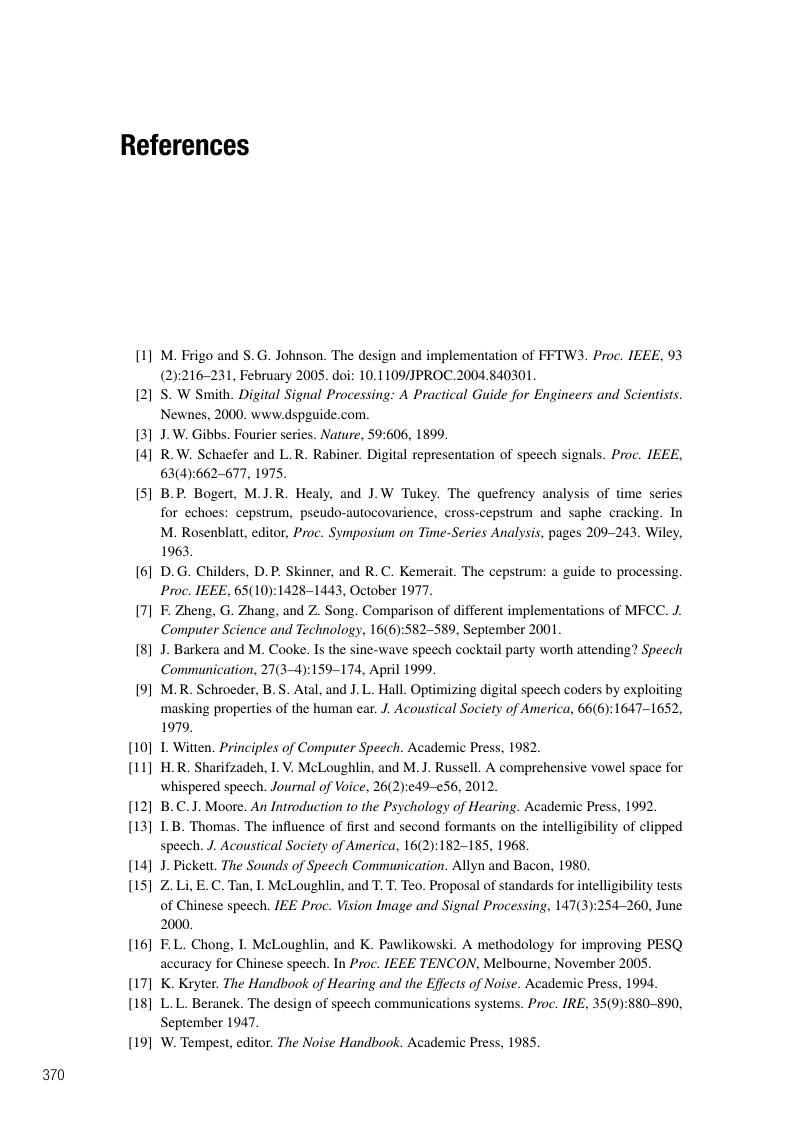Book contents
References
Published online by Cambridge University Press: 05 June 2016
Summary

Information
- Type
- Chapter
- Information
- Speech and Audio ProcessingA MATLAB-based Approach, pp. 370 - 378Publisher: Cambridge University PressPrint publication year: 2016
